Eldraine or Shine
Welcome to the first week of Throne of Eldraine previews. Today, I'm going to walk you through how the set ended up being Camelot meets Grimms' Fairy Tales. As last week's article hinted at, it's a story that took place over many years. I'll be sharing that story today. Also, before today's article wraps up, I'll being showing off a number of cool preview cards.
But before I get to my story, I want to begin by introducing all of you to the Throne of Eldraine Vision Design team.
Meet the team!
Peter Lee
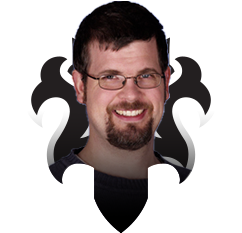
Peter was my strong second on the set, meaning he took care of managing the card file. He and I had worked closely on War of the Spark, and I was happy to again have him as my strong second. Peter proved to be invaluable on Throne of Eldraine as it was a top-down set, which played to Peter's strengths as a designer. One of the first cards he designed was the gingerbread man creature (I showed off the art at my San Diego Comic-Con panel when I first talked about the set), and it helped set the tone for what I was hoping to get out of the design.
Andrew Brown
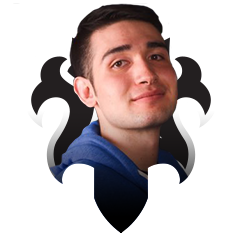
Andrew was the Play Design representative on the team. Top-down designs can be a bit tricky to balance, as you're making more decisions based on overall holistic feel than the design structure. Andrew was a great partner and helped us find ways to play into the resonance in a way that the Play Design team could balance.
Dan Burdick

Dan was another play designer to spend some time on the team. Dan had an infectious attitude that always made designing fun.
Ethan Fleischer
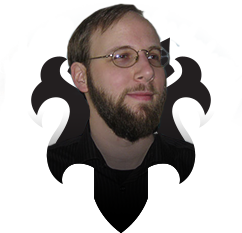
Top-down designs need a lot of handcrafted individual card designs, so I was happy to have a great designer on the team to help out. At this point, Ethan's been on so many design teams there's not much else for me to say that I haven't mentioned in other bios, but I'm always happy to have him on one of my design teams.
Mark Gottlieb
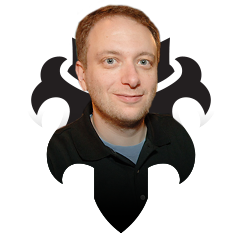
Mark was the set lead I was handing off to (he would later pass on the set to Erik Lauer, as he had a different set to work on), and we like to have the set lead on the Vision Design team so that there's a smooth transition at handoff. It's important that they understand what the set is trying to do and that we're in sync with how they want to do the design. Like Ethan, Mark has some strong card design skills, so he was also valuable in helping craft a lot of the initial top-down designs.
Mickey Cushing
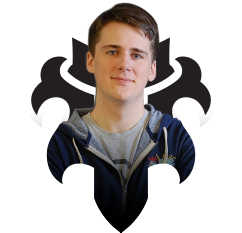
Mickey was an R&D summer intern. I enjoyed that whatever task or homework I threw his way, he would always tackle it as thoroughly as possible. I believe we were the last set he worked on before he had to return to school.
Pete Ingram

Pete was a contractor we'd brought in to help Play Design. Pete was eager to be on a Vision Design team, and I was happy to have him on my team. His designs had a nice mix of being flavorful but also very functional.
Sam Stoddard
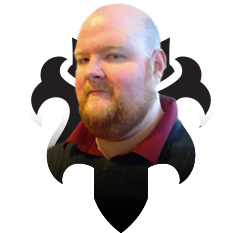
I've found that Sam ends up being a great sounding board on a design team. He likes to understand why we're doing what we're doing in the design and always brings up questions that forced me as the lead to clearly explain what I'm trying to accomplish.
Kelly Digges (creative liaison)

Kelly was the creative representative on the team. The way that process works now is that they aren't at all the meetings but attend any meeting where I feel their input would be helpful. One of the biggest challenges with Throne of Eldraine was figuring out where to draw the line between what happens in the source material and what makes sense in a Magic set, and Kelly was great at helping us figure that out.
Cynthia Sheppard (art director)
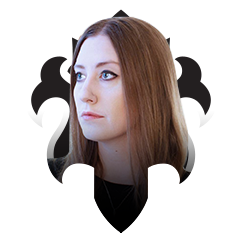
Cynthia was the art director for Throne of Eldraine. Not every art director gets as involved in the design, but Cynthia proved to be a great resource as we were crafting the look and feel of the set.
Mark Rosewater (lead)
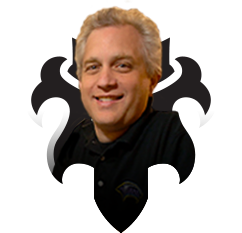
And then there's me. As you will see, this set was a long way in the making, so I was very happy to get to be the one to lead its vision design.
Once Upon a Time
Our story begins back in 2005. That's when we began working on Lorwyn. When we started the set, we really only knew two things. One, we wanted Lorwyn to be a tribal block, and two, we were going to pivot to Shadowmoor block, which was going to be a darker version of the world and meant Lorwyn wanted to be lighter to help set up the contrast. Because it was a tribal set, we began by sitting down with the Creative team and hammering out a list of creature tribes we were going to focus on. Due to the nature of a tribal-heavy set, we weren't going to have a lot of room in the set for any creatures of a tribe we weren't focusing on. That meant the creatures we picked were going to be very instrumental in the worldbuilding.
We started by focusing on the tribes we knew we wanted to hit mechanically. That meant focusing on what I call the characteristic tribes, aka the basic tribes that most often show up in each color (white, Human; blue, Merfolk; black, Zombie or Vampire; red, Goblin; green, Elf). Zombie and Vampire were a bit problematic, as it's tough to include them in a bright, optimistic world. Also, Brady Dommermuth (the creative director at the time) was eager to try a world without Humans, so we committed to Merfolk, Goblins, and Elves. Then, with some back and forth between the Design team and the Creative team, we committed to Faeries, Giants, Elementals, Treefolk, and Kithkin. (The shapeshifters wouldn't happen until changeling was added to the set later in design.) This creature selection pushed Brady and the Creative team to use Celtic mythology as an inspiration point for the set. (I should probably note that the idea of a Celtic influence probably shaped what creature types we chose.)
When the dust settled, we had a very distinctive world, one that I was excited to help bring to life. As I worked on it, I realized it hinted at something cool that it didn't quite execute on. A world of Faeries and Giants and Elves teased a sense of fairy tales, but something was missing. (Note that by "fairy tales," I'm talking about European folklore, mostly central Europe—what shows up in books of fairy tales and in animated films.) It took me a while to place my finger on it. The absence of Humans and the lack of a more structured society (no kings and queens, no princes and princesses, no castles and knights) meant that a lot of the staples of fairy tales were missing. It was as if we had a scattering of elements found in fairy tales but without any of the tropes. I enjoyed Lorwyn for what it was, but it made me realize that there was another world out there waiting to be made—a fairy-tale world.
Cut to four years later, and I'm working on Innistrad. For the first time, I was designing around pop culture genre tropes (in this case, the horror genre) and was excited by the possibilities it offered up. We were able to take stories and characters and objects and settings and situations that the audience already knew through pop culture and use it to design both individual cards and larger design elements. We got to put our own twist on it, but we were able to design something that came charged with emotional resonance because it tapped into something the audience already knew. It was a powerful tool, and I was interested in doing more of it.
This raised the question: what pop culture genre tropes could we explore? Because Magic is at its core a fantasy game, the closer the genre tropes were to fantasy, the easier they were to adapt. That's when I thought back to Lorwyn. Of course, fairy tales were the perfect choice. One, it's something the vast majority of our players would know well. I remember seeing a statistic that the average American when they die will have seen ten different movies in their life that were essentially Cinderella. (I counted, and I'm up to fourteen.) Two, fairy tales take place in a fantasy setting. There's castles and dragons and witches and elves. Three, because fairy tales have been told so many different times through so many different means, there are numerous ways they can be approached. They're very adaptable and would be easy to blend into a Magic setting.
A fairy-tale world seemed like the perfect fit for Magic. There was just one problem: every time I pitched the idea, I was shot down. I think the biggest concern was one of juvenilization, as fairy tales are often associated with children's stories. I referenced things like Grimms' Fairy Tales to point out that there are very adult ways to approach the material, but my arguments fell to deaf ears.
Cut to 2015. We were starting to have discussions of what came after the Bolas Arc (the three-year stint from Kaladesh to War of the Spark) and were exploring what new worlds we could visit. For numerous Cardcrafting meetings, any R&D member was invited to come and spend 20 minutes pitching their idea for a new world. It had been a little while since I'd pitched my fairy-tale world idea, so I made a new presentation and brought it to the meeting. I pitched my world as the next Innistrad, a top-down world built on pop culture genre tropes. The response was, "Eh. What else you got?"
At that same meeting, though, Shawn Main pitched a different world, one inspired by Arthurian legend. We hadn't done a true high-fantasy world since the shard of Bant in Shards of Alara block (although, obviously Dominaria had some elements of this), and Shawn thought it was time for us to get back to our roots (Limited Edition (Alpha) had a lot of high fantasy in it). He also believed there were some fun tropes we could play with. Unlike my presentation, Shawn's went over very well and his idea was placed into the pile of worlds to consider.
About a month later, Aaron Forsythe, my boss and the VP of Magic design, called me to his office to talk about upcoming world ideas. He wanted me to talk through my concerns about Shawn's Plane idea. I thought the Arthurian influence would create a beautiful-looking world, I believed there would be a lot for the Creative team to use to make the cosmology of the world, and I thought we could make a lot of good card designs from the material. My worry was twofold. First, the trope space from Arthurian folklore wasn't very deep. Yes, there's a lot of it if you're well versed with the source material, but, for resonance, we have to focus on what the average person would know, and if you went up to the average player and had them write down everything they could think about tied to the material, the list is, at best, 10–20 items (and I'm probably being a bit generous). That wasn't quite enough.
The second problem was actually the bigger problem, though. Magic has done high fantasy numerous times. What did this world have to offer that would make it feel different from Bant or Dominaria? Yes, we could fill out a set with a lot of cool Knights, but they weren't going to be something that drew players in because it's just a well we've gone to so many times before. There was nothing new to hang our hat on.
This concern was well illustrated by an interaction I would have many months later. We often like to invite other people to our design playtests so that we can get fresh perspectives on the set. After one playtester had playtested the set for the first time, I went up to him to get feedback. I asked him what he thought of the set. He gushed about all the fairy-tale elements. I asked what he thought about the Camelot part of the set. He said he hadn't noticed any. I then looked at his deck. He was playing Knight tribal. About three quarters of his deck was the "Camelot part of the set," but it didn't stand out to him because it's just the kind of thing Magic does all the time. Given, he was playing with playtest cards, so there was no art or flavor text to help spell out that part of the world, but the interaction was very telling.
Back to my meeting with Aaron. I said I felt the set was missing something, but I had the solution. The fairy-tale world I'd been pitching overlapped a lot with Shawn's world. Both worlds needed the structured society Lorwyn had been lacking. You couldn't have fairy tales without castles and princesses and princes. What if we combined the two worlds into a singular world? That would give the set more trope space to play with and give it something new, something we could market the set on. (Interestingly, it also ended up giving the world its conflict engine, in that it gave the Knights of the world something to battle.) Aaron said I'd made a compelling argument, and Camelot got its Grimms' Fairy Tales.
Telling the Tale
One of the first things I did when we started design was create a list of all the fairy tale/Camelot tropes we could build cards out of. It was a surprisingly long list. (I remember making an early proof of concept list and stopped after half an hour when I'd made a list 100 items long. Amonkhet, in contrast, spent weeks making its list and never got anywhere close to 100.) It turns out that fairy tales, in particular, have a lot of component pieces to work with. There are characters and objects and events and magical spells. They just lent themselves so well to making Magic cards. We could take one story and get numerous cards out of it. Let me demonstrate while also showing off some preview cards. I talked above about how well-known the story of Cinderella is. As such, I'm going to use that for my example.
We begin as all fairy tales do, Once Upon a Time. In our protagonist's case, it starts with her father dying.
Click here to see Once Upon a Time

Her life then radically changes without her father there, as her wicked stepmother begins treating her less like a stepdaughter and more like a servant.
Click here to see Wicked Guardian

Luckily, our heroine has someone on her side: a mothering Faerie that can help her.
Click here to see Faerie Guidemother
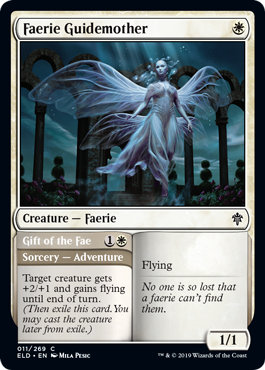
Among other things, she can use her magic to create a special ride out of a pumpkin.
Click here to see Enchanted Carriage
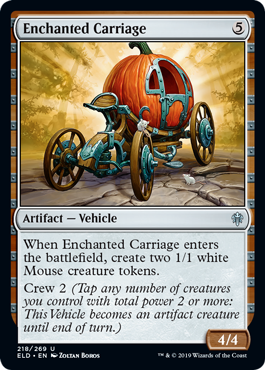
But that magic wears off at midnight.
Click here to see Turn to Pumpkin
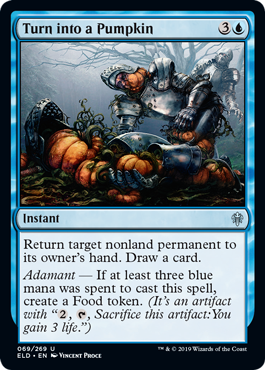
Leaving the things as they began.
Click here to see Return to Nature
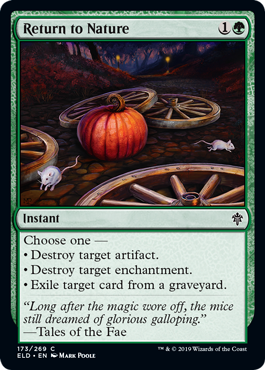
Our heroine runs away but leaves behind something important. (Note this next card is technically not a preview as it's already been previewed in the Brawl event on MTG Arena, but it felt wrong not to reveal it for those that haven't seen it yet.)
Click here to see Crystal Slipper
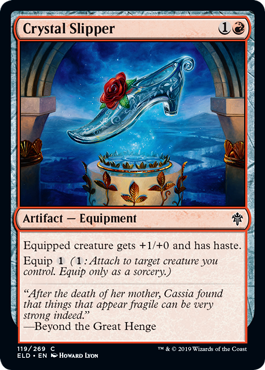
But luckily, someone is sent to find the mysterious woman who left behind a crystal slipper. In our version, they used a tracker with a Wolf.
Click here to see Wildwood Tracker
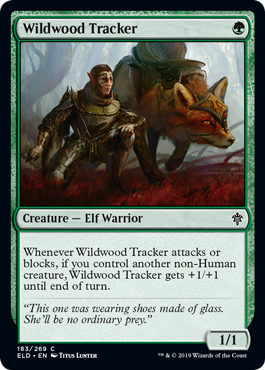
That's eight cards from the story, and, obviously, there were many more we could have done. At various times in design, we'd experimented with the following: Endless Household Chores, Helpful Mice, Cruel Treatment, Vain Stepsisters, Royal Ball, Homemade Dress, Enchanting Gown, Midnight Bell, Hasty Exit, Slipper Fitting, and Royal Marriage.
You'll notice that I didn't mention the handsome prince or "happily ever after." That's because they exist in the set and are being previewed elsewhere. Why? Because of something else we learned while compiling the set. Fairy tales have a lot of components that overlap stories. Sure, Cinderella involves a handsome prince, but so too does the story of Sleeping Beauty and Snow White, and the Little Mermaid and Beauty and the Beast. The Big Bad Wolf terrorizes Little Red Riding Hood, but he also blows down two thirds of the houses of the Three Little Pigs. Rumpelstiltskin uses a spinning wheel to spin straw into gold, but it's also the device which curses Sleeping Beauty and puts her (and the kingdom) to sleep.
The closest set to Throne of Eldraine's design is Innistrad, as it was the one other time we created a top-down set built on genre tropes. The big difference this time was that fairy tales and Camelot are built on age-old stories that have been repeated and iterated on over centuries, often borrowing from one another. This results in them reusing elements more so than horror. Innistrad's top-down design overlapped in the monsters, but it didn't have the same "mix and match" feel that Throne of Eldraine does. The little girl that turns into a Demon really had little to do with the scientist that became a giant fly. The fairy-tale stories, in contrast, clicked together in ways I hadn't anticipated when we set out to make the set.
The end result of all this is that Throne of Eldraine has a very different feel from Innistrad (and I mean more than just the tonal difference of the source material). When playing Throne of Eldraine, you can pick and choose your game pieces such that you can recreate moments from the story. For example, Return from Nature can destroy the Enchanted Carriage. You can also mix and match them to create stories where things happen that never did. Perhaps the handsome prince can ride the Enchanted Carriage or meet the girl that was once a mermaid or the gingerbread man or the cow that got traded away for magic beans or maybe the black knight. The ability to take all these familiar components and intermix them makes for a very fun play experience, one I'm excited for you all to try.
Happily Ever After . . . For Now
That's all the time I have for today. Join me next week when I'll start explaining how the set got put together and how the mechanics got made. I'm always eager to hear your feedback (on today's article or Throne of Eldraine), but as this set is one I'm especially proud of, I'm even more eager than usual. You can email me or contact me through any of my social media accounts (Twitter, Tumblr, and Instagram).
Join me next week as we start talking about the world of Eldraine.
Until then, may this set help you fulfill a wish of your own.
#669: Meet Sarah
#669: Meet Sarah
28:35
In past podcasts, you've met my dad, my mom, and my eldest daughter, Rachel. Today, you get to meet my youngest daughter, Sarah.
#670: Banned & Restricted, Part 1
#670: Banned & Restricted, Part 1
32:03
Not that I'm proud of this, but I have the honor of having had a hand in creating more cards that have been banned or restricted than any other designer. In this podcast, I walk through the many cards I've helped design from this list and talk...
- Episode 668 Zones
- Episode 667 Full-Art Lands
- Episode 666 Demons

